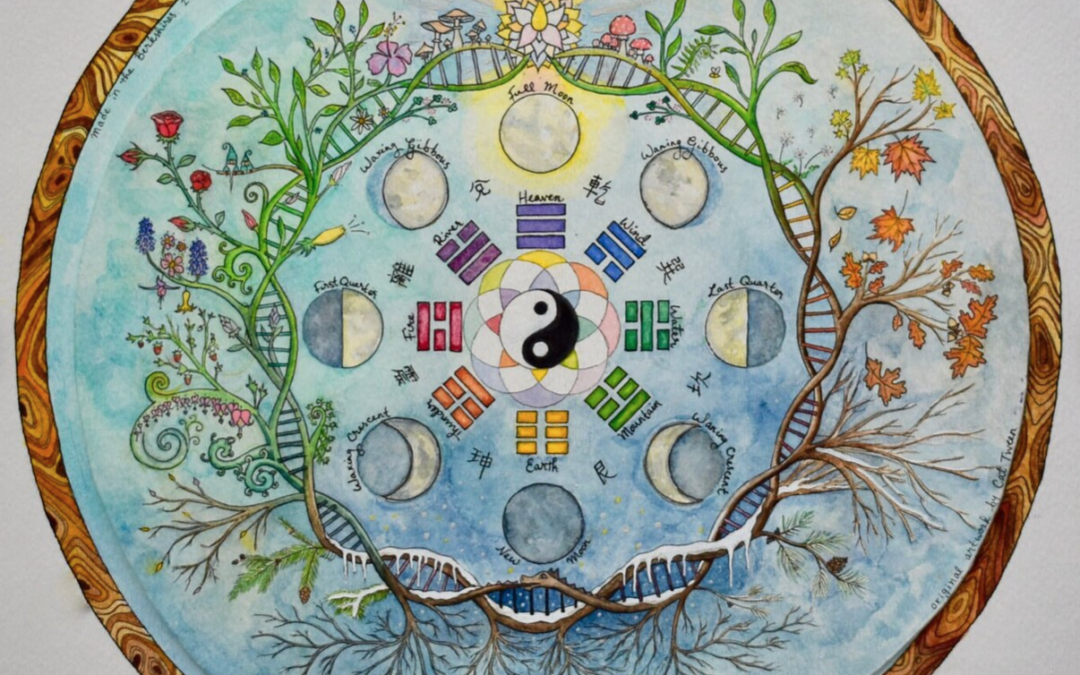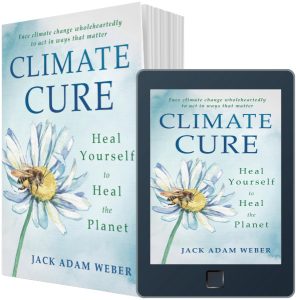We live in a toxically fix-it culture. By which I mean we try to fix everything, which ironically and tragically, breaks us.
Emotional injury is a prime example of injury that cannot be healed by an aggressive, fix-it model. In an emotionally illiterate culture, this is a big problem. The cure for such tragic ironies is paradox. Paradox is the quintessential cure for emotional pain, just as manipulative fixing is the best practice for physical injury.
Caveat: those of us deeply embedded in mind-body medicine understand that emotional pain can manifest as physical pain (and vice versa). This essay therefore is about emotional injury that manifests either emotionally or physically—or both, which is most often the case.
By the way, a great way to determine if physical pain is more emotionally or physically generated is to engage body-mind practices that release physical pain and then to work on a deeper emotional level with what is leftover. Okay, now onto the heart of the matter . . .
**
In medicine, allopathy means “opposite treatment,” or practicing in opposition to the injury. We try to get rid of what hurts. Our prevailing allopathic model attempts to fix what is broken — a wound, infection, broken bone, or failing organ. And this is appropriate when physical fixing is needed.
Healing physical pain is linear; we engage a corrective, opposite path to fix what is broken.
Healing emotional pain is paradoxical; we heal our pain by embracing with allowance and empathy. Physical injury requires allopathy, while emotional injury requires empathy.
When get locked into this unilateral fix-it paradigm, our inner lives suffer, miserably. It allows for the perpetuation and exacerbation of trauma (unresolved trauma begets more trauma). When it comes to tending the soul, to healing through heartbreak, the fix-it model fails. It gets in the way, big time.
With emotional wounds we have to let go of mechanically manipulating the source of pain. We must allow our emotional hurt, embody it as fully as we can. For this, we can practice empathy, which means to feel in our pain (from em- ‘in’ + pathos ‘feeling’). And we want to do this without trying too hard — just allowing ourselves to fully feel our ache as much as we are able.
Trying to get rid of heartache — including by trying to manhandle and manipulate the feeling — only shoves it down, represses it into shadow, where it festers and rules our lives . . . unconsciously.
**
There is, however, some overlap between allopathy and empathy. When we experience physical pain, for example, we can allow the sensation of pain, allow it to flow through us. We surrender more than we resist, such as when giving birth (I’m told). This adds some empathy to allopathy.
In genuine transformation, we give birth to our new selves. We do this by fully allowing our pain, so that its pathos can transform us. Our entitled or fear-based ego in the form of will power must step aside for this, as opposed to trying to fix the painful experience.
Notice I didn’t say we have to accept our pain. It’s helpful when we can, but it’s not always possible, at least not all at once, especially with big hurts. But little by little we can accept more of it, a process figuratively known as titration. This is a term borrowed from chemistry, in which once substance (the analyte) is gradually neutralized by another (the titrant) In emotional titration, empathy and presence are the titrant to neutralize the analyte of pain.
The more we endure our pain (called “distress tolerance”), the more we can gradually titrate and alchemize it. But not always. Sometimes it’s not possible to accept our pain. Denial can even return even after we think we’ve accepted a loss. Some portion of our pain we may never “heal” or get rid of, not even paradoxically through allowing. We learn to carry it, hopefully in reduced severity to the original ache.
**
But if we are to embark on the journey of healing the emotional pain of trauma, titration via allowing and fully embodying our feelings is the most reliable path I know. Again, this process is utterly paradoxical, unlike allopathy. It relies on allowing the opposite of what seems like healing: feeling the pain, and which hurts more in the beginning, in order to be delivered unto another opposite (resolution of the pain). This requires faith. Understanding the paradox from the beginning can help us muster the distress tolerance needed for transformation.
Mere allowance of pain, however, is still not enough to ferry us to the other side of pain and loss. We must show up with our heart, to our pain, as it is, with empathy. We must not be invasive and pushy. We must hold ourselves in an unconditional container of acceptance. We love ourselves with the most delicate care, with genuine empathy. We attune to our pain, as we would approach or greet a shy and wounded animal we want to connect with and care for. A friend or therapist can offer such empathy. We can even allow an animal friend or the earth itself to hold us, evoking a feeling of being held and accepted.
This is how emotional pain is paradoxically resolved, a process know as titrating, alchemizing, or metabolizing the hurt. This is to integrate trauma into our whole being, by neutralizing the feel-bad and releasing the feel-good gifts (what I affectionately call “our finer jewels of being human”) that get mired in the body-mind injury of trauma. This is a form of acceptance, which originated with an original welcoming of our pain.
In addition to the unconditional support from others, we can offer this embodied love to ourselves by contacting our hurt and being with it in a way that feels comfortable and soothing to the part of us that hurts. This is also how we cultivate sensitivity — by attuning to our pain and the quality of presence it wants from us.
This, in my experience, is what allows us to grow our hearts in earnest. And it’s what allows us to show up for others who hurt, to be that tender, loving presence for another. We learn how to show up for others both by having had loved ones show up for us and by showing up for ourselves.
This, my friends, is how to transform and save your life from the effects of traumas big and small, acute and chronic. This is how to move emotional pain out of the body, and how to resolve physical that is emotionally generated.


